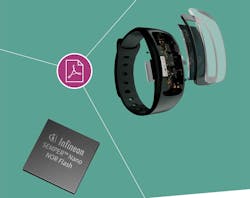Overcoming Design Challenges of Wearables and Hearables
The rapid commoditization of wearables and hearables has put tremendous pressure on manufacturers to introduce new capabilities that can command a higher price and increase profitability.
Advanced health monitoring, such as atrial fibrillation or blood pressure, is a differentiating feature that enables a manufacturer to turn a $60 smartwatch into a premium product that sells for a much higher MSRP.
While innovative features improve the user experience and increase the value of these products, they add significant complexity. Consider the challenge of enabling blood pressure sensing in a wearable form factor. Using existing photoplethysmography (PPG) sensor technology and advanced algorithms might be implemented to cancel out motion and other artifacts. These advanced devices provide the capabilities needed to reduce the dependency on a traditional blood pressure cuff.
Further complicating design is the need for a compact architecture that minimizes the system footprint. This must be achieved with the lowest power consumption possible to maximize battery operating life. Given the high volume of these markets, reliability helps minimize return losses.
Finally, developers must meet all of these requirements while driving costs down. These aren’t issues just for smartwatches. The pressure to differentiate through new capabilities impacts all wearables, especially hearable applications.
This article explores how adding new features impacts design and the role non-volatile memory plays in enabling developers to meet increasingly challenging size, performance, power, reliability, and time-to-market requirements.

